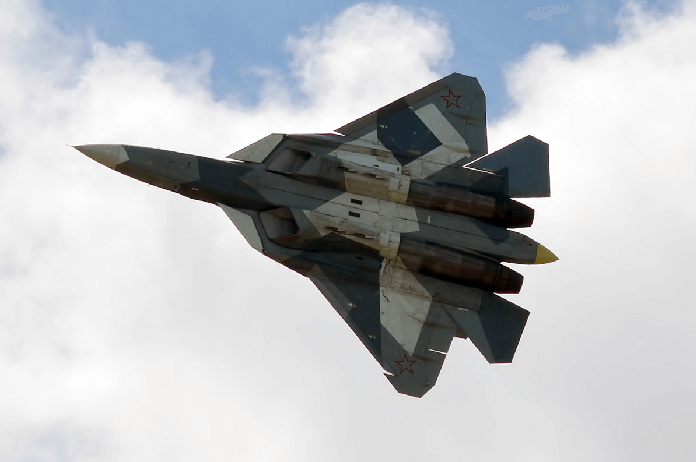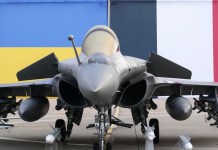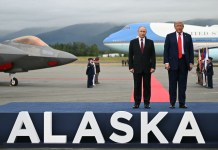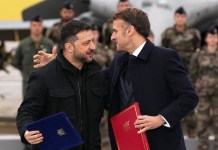Russian President Vladimir Putin has been on a mission to challenge the perch on which the United States has been resting in recent years, much to the contribution of US fighter jets like the stealthy fifth-generation pair of Lockheed Martin’s F-35 Lightning and F-22 Raptors, which are considered the most advanced fighter jets on the planet.
US Think Tank Rubbishes Russian Su-57 Stealth Jet; Says No Comparison With F-35 Fighters
Moscow has been no stranger to being a dominant force in the field of defense aviation with Mikoyan and Sukhoi fielding an array of modern fighters in the history of the Soviet Union/Russia, however, they have in recent years lagged behind due to the failure of fielding a pure fifth-generation fighter to compete with the US and even European fighters.
The development of the Sukhoi Su-57 was seen as the answer to Russia’s problems with the fighter touted to reach unassailable heights by many experts, owing to the success of its predecessors Su-35, Su-30 and others.
However, much excitement surrounding the introduction of the fifth-generation fighters in the Russian Air Force and subsequently the export to allied nations, has died down due to the jet project being dogged with problems ever since its inception in 2007.
After JF-17 Fighter Jets, China Sells Wing Loong-II Armed Drones To Nigeria
The fighter has been highly critiqued for not possessing a second-generation engine, which has been reportedly been a huge challenge for defense companies in Russia.
According to an American research organization, RAND (Research and Development), all of the 76 Su-57 aircraft which are set to be received by the Russian Air Force in this decade will be without the second-generation engine” which is called the “Product 30”, which if true, contradicts the Russian aircraft maker’s claim of outfitting the batch with the new engines.
While the current prototypes were originally designed to incorporate the second-generation Izdeliye 30 engine, they are still powered by older engines.
According to a defense expert – “All prototypes of the Su-57 built to date do indeed use the AL-41F1 engine, developed on the basis of the Soviet AL-31F installed on the Su-27. The same applies to the first production fighters.”
As compared to the AL-41F1, which produces a thrust in afterburner of 15,000 kgf, Product 30 it should be 18,000 kgf.
US Think Tank Rubbishes Russian Su-57 Stealth Jet; Says No Comparison With F-35 Fighters
“The installation of a new engine is an important step because without it the aircraft will not have the required characteristics of the fifth generation, such as, for example, performing non-afterburning supersonic flight at all ranges of required altitudes and with different payload options,” according to the expert.
One of the most important elements that separate a good fighter from a great fifth-generation fighter is the presence of stealth technology which helps in evading enemy radars in order to launch surprise attacks.
While the modern fifth-generation fighters like F-35 and the Raptors utilize that technology to utmost perfection, the Su-35s despite being Russia’s most advanced planes to date, lack stealth features. According to the expert, while the fighter is bracketed under a stealth fighter, some of its features end up reducing its stealth.

“The difficulties are clearly visible. There are the engine compressor blades “peeping” out of the air intake, drastically reducing stealth. This is the lack of a bail-free flashlight, as well as flat nozzles (as on the F-22 Raptor), and the “ball” of the optical-location station in the bow, which also does not benefit stealth.”
Moreover, the fighter jet is just not yet combat-ready, with Russia not having the means or the capabilities which are at the disposal of the United States.
The single-seat, twin-engine Su-57 is built as a multirole fighter designed to destroy all types of air, ground, and naval targets and the jet 57 combines the functions of an attack plane and a fighter jet while the fighter’s aerodynamic configuration ensures the low level of radar and infrared signature.
A product of the PAK FA, a fifth-generation fighter program of the Russian Air Force, the fighter which has the internal name of T-50 is set to carry hypersonic missiles. While the Russians have claimed to have tested the Su-57s successfully in combat conditions in Syria, they are yet to provide any evidence of it.




